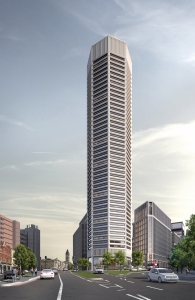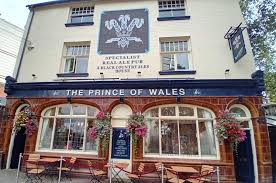You will typically arrive at New Street Station, itself redesigned and rebuilt several times down the years. These days you’ll be decanted from your train onto a vast concourse featuring Ozzy the Bull. This mechanical beast was the symbol of the 2022 Commonwealth Games held in the city. It was due to be scrapped but, by popular acclaim, was saved and now sits glowering on the station concourse.
A word for English railway stations in general. They are generally accessible, welcoming and with arrival/departure times clearly available and updated in real time. The same goes for the West Midlands bus services. It is a far cry from the day where it was in the lap of the gods where your train/bus was and when it would arrive/depart. It’s beyond this that, out on the rail/road itself, that you might incur issues.
—–
They say that Birmingham is grim and ugly. At first glance it is hard to defend against this accusation. The old Victorian city has largely been demolished, grand buildings gone, functional edifices in their place. Old roads extinguished or re-routed. The historic Bull Ring is no longer to be seen at all after a series of redesigns. As I took my first walk through the city, roads were closed, construction sites abounded. The city is walkable but, by heck, it’s not a pleasurable experience. Nothing seems to conform to a coherent whole except in the heads of deranged city planners. This is the latest abomination, the 49-storey Octagon Tower. Who the hell thought that this was a good idea?
It makes Jersey’s planners look like visionaries.
The shops and precincts are fine I guess. Bold and brash is the overall feeling, fitting into the 21st century demographic of the city. I was able to easily buy the two essential items I’d forgotten to pack – toothbrush and comb. My one-night hotel was a part of a city centre Wetherspoon’s, both comfortable and affordable. Eateries abound and you’ll find plenty to fit your budget and taste buds.
And the pubs, to me an essential part of any night out. Happily and surprisingly, many solid, old-fashioned boozers remain, with most of them selling well-kept Real Ale. In the 1970s I used to head after work to the Old Royal in Church Street. I popped in (it’s now simply the Royal) and it’s hardly changed. Wandering down by the canal, the Prince of Wales has miraculously evaded the bulldozer as redevelopment rages all around.
On my single evening in the city I took a nostalgic trip along Bradford Street, a remnant of Birmingham’s industrial heritage. Still going strong and selling great beer are the Spotted Dog, White Swan and Anchor. I wonder if they’ll still be standing in a few years time.
—–
Actual visitor attractions are far and few between. I headed for the Jewellery Quarter, an old corner of Birmingham once home to small workshops and factories producing precious items to sell on to wholesalers. Sadly this is now no more than rows of shops offering stuff directly to the public. It’s a tawdry look. I was more interested in the much-signposted Museum of the Jewellery Quarter. When I got there I found that it was closed, probably permanently. It summed up my visit.
Returning to the city centre I made a beeline for an old haunt, the Museum and Art Gallery, always free and tolerant of well-behaved schoolboys. It was closed for renovation. Not a good look.
The very best thing you can do in Birmingham, dear visitor, is head for the canals. Here is where you’ll find the heart of old Birmingham and its industrial past. Miles and miles of well-maintained canals which offer peace after the mayhem of the city. And here is the gem not to be found in the Jewellery Quarter – it’s called the Roundhouse.
Here is a homage to old Birmingham and specifically to the two sets of workers who were based here, the lamp-lighters and the night-soil men. Beautifully researched and presented by passionate volunteers and also offering a lovely café with a slice of pizza to go with your coffee.
So there’s my impression of Birmingham city centre in a nutshell. I’ll move on to the ‘burbs shortly.





Whoa, that Octagon Tower is brutal. Fits right in with … nothing!
LikeLike
🙂
LikeLiked by 1 person